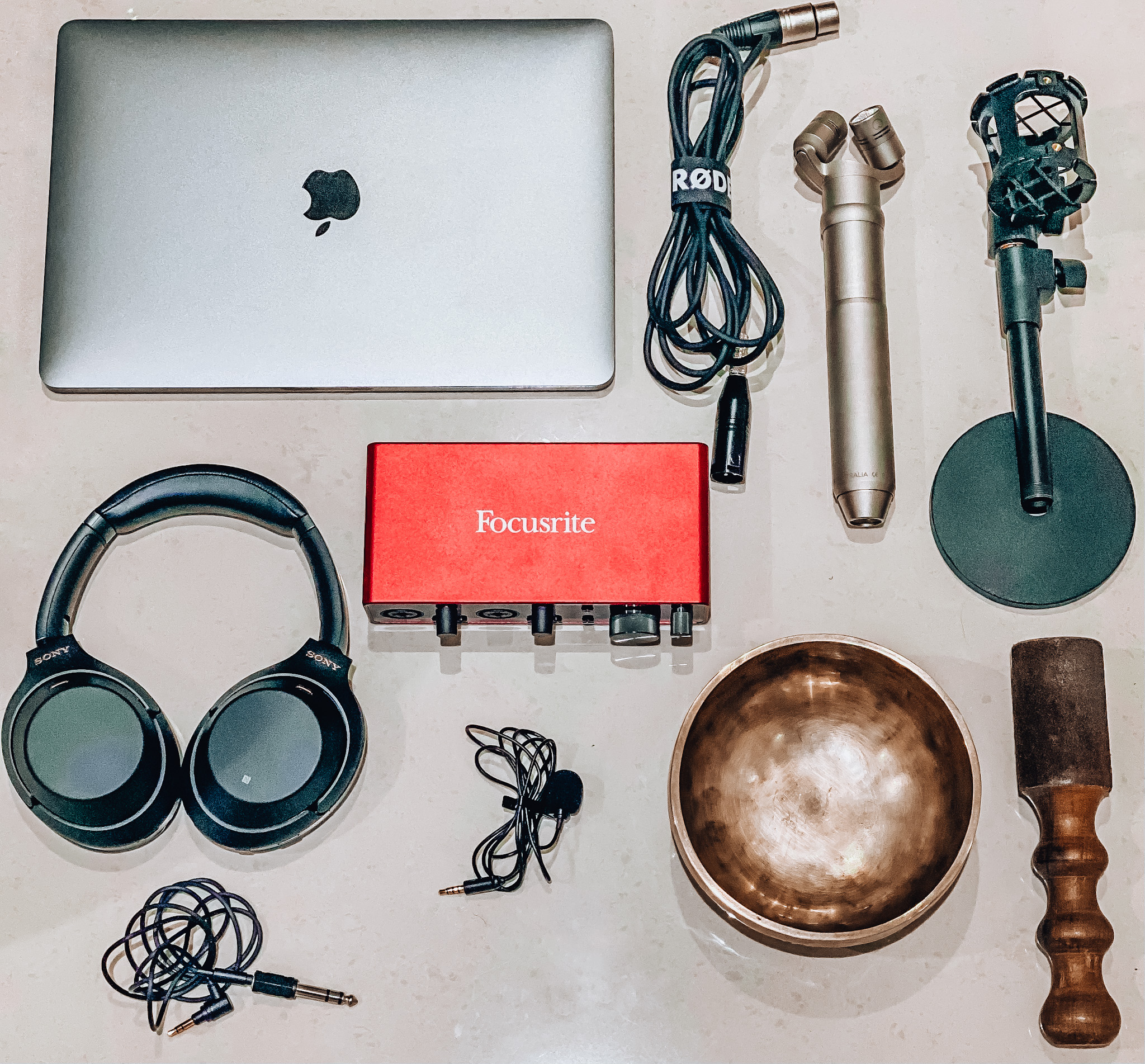
3 tips for running online sound healing sessions
Sound therapy: 3 tips for running online sound healing sessions. By Charlie Christie
If you were anything like me when you first thought of giving online sound healing sessions, you probably thought: where do I even start? How much do I need to spend to make it work? Will it sound and feel the same? And so on.
I hear you. The good news is, not only are the ways in which teachers and practitioners are delivering their sessions online evolving, but technology is also moving to keep up with the demands of people taking their businesses online. I recently learned of an acupuncturist still treating her clients by running online sessions for them. Amazing!
After giving and receiving online group and private healing sessions for a few years, each session — although certainly different to in-person — has always been just as profound.
During the Covid-19 months, I got to experience some incredible sessions that I most likely wouldn’t have attended otherwise; I also connected with some wonderful healers all over the world.
If you haven’t tried receiving healing online yet, I highly recommend that you do. It is also a good way to learn how you might want your own online sessions to look and feel.
From connecting to your clients to connecting equipment, here are my top three tips for running online sound healing sessions:
- Don’t put pressure on yourself to make it perfect
Prepare and practice: You only get better at something the more you do it. There will be lots of teething phases you (and your wi-fi!) will go through to get there. Reach out to friends and family that aren’t there and practice with them, they will always give you honest feedback about how it looks and feels.
Space: Now, instead of people lying down around you, you have lots of wires and equipment. Make sure your space is safe for you to walk around in. Ensure you have a quiet room to yourself where you won’t be disturbed. Minimise external ambient noises that microphones might pick up on. I suggest having a clean space, a space where your laundry isn’t drying behind you, for example. Make your online environment as welcoming as your in-person one.
Camera shy: Being in front of the camera can make you feel vulnerable. Being online and on-camera can feel even more vulnerable because you feel like the whole world is seeing you when you click, ‘Go Live. Then, to top it all off, your clients aren’t in the room, so you feel like you’re missing the intimacy and immediate energy feedback that your in-person sessions provide. I offer this with love and reverence because I’ve been there…it’s all in your head! You have a gift to share with the world and people want to receive it. And they will do so with open arms and hearts. They may be adjusting to the online world as much as you are and will be very patient. Try it once, try it again, repeat. You might discover how much you love it.
- Equipment
You want to deliver a great session and especially want the sound to sound awesome as well. It’s a minefield out there with all kinds of equipment and if you’re not already experienced in the tech world, this is where the overwhelm really kicks in. Based on my personal research, experience and speaking to a ‘sound guy’, here is what I recommend for your sessions.
Microphone: The sound will never be exactly the same as how it’s received in person, but you can get pretty close to it. I use two mics, one for the bowls and one for my voice. The bowl mic I use is a Multi-Directional Condenser Microphone. The mic I use for speaking is a Lapel Microphone.
You don’t need to have two microphones; you can use a USB Microphone too. If you have one mic, you might have to direct it to you when you’re speaking and to the instruments when you’re not. Check what’s in the box, you might have to purchase XLR cables separately. You may also need a mic stand.
Interface: To run the sound from one or two microphones through your computer so the sound is received by your clients, you’ll need an interface. Focusrite is an excellent brand that offers a great starter package deal of an Interface, Microphone, Cables and Headphones, which is both affordable and excellent quality. They also come with music software should you want to record your sessions.
Headphones: When you run your sound through the interface to your computer, you won’t be able to hear your computer audio without headphones connected to the interface too. Most interfaces have a headphone port for this, in some cases, you might have to buy a headphone jack to connect them to your interface.
Video conferencing software: The obvious choice over the course of 2020 has been Zoom. You can sign up for a free account, but there is a time limit per meeting of 40 minutes. If you’re running regular online sessions, it’s worth the £99 a year upgrade. There are lots of other options such as Microsoft Teams and a newly-launched company, BlueJeans. You’re not short for choices.
Sound settings: Your computer has sound settings and so do all video conferencing software. A quick Google search on the sound settings for your device and video conferencing software will give you clear instructions of how to set this up on both.
Wi-fi: Although you can never fully guarantee what your Wi-Fi will and won’t do, a good connection will, of course, help. Check with your internet providers that you’ve got the best you can get. I also recently heard of wi-fi webbing that can help to boost your existing wi-fi connection, apparently.
- Distance healing intention
One of the basic human needs is connection in order to survive and thrive. How thrilling to be alive in a time where a connection is possible in more ways than one.
I have worked with people all over the world for years and never met them in real life. Not just from a healing or business perspective, but for many aspects of life.
Time is a man-made illusion in order to measure our lives by. When you understand this concept, you will also understand that you can place your mind anywhere at any time, on any timeline.
With a pure loving intention of calling in the energy of your clients, guides and universal forces, asking their permission to work with their energy, you can maintain spiritual boundaries and work with energy the same way you would in person.
Some people are concerned that electrical frequency can interfere with the frequency of sound. While I'm sure there is an element of truth in this, I believe the power of intention in my personal frequency will overcome this and be felt from within to wherever I send it and beyond and stay intact. Intention is everything.
This is what works for me and is based on my own experience, but there are no hard rules as to how to run online sound healing sessions. My wish for you is that you find what works for you, your clients and your budget so you can continue to share your light with the world.
NB. I have no affiliation to the products I am recommending to you, simply offering an offering.







